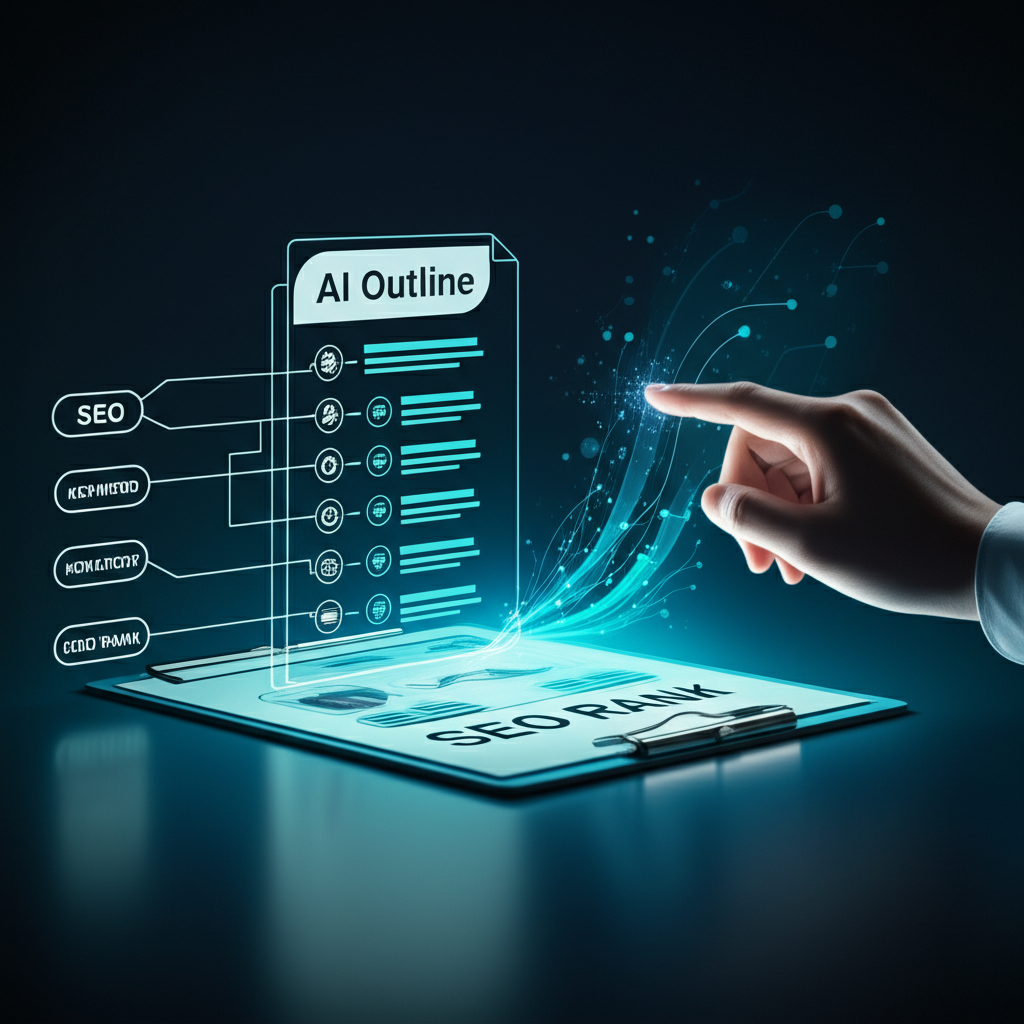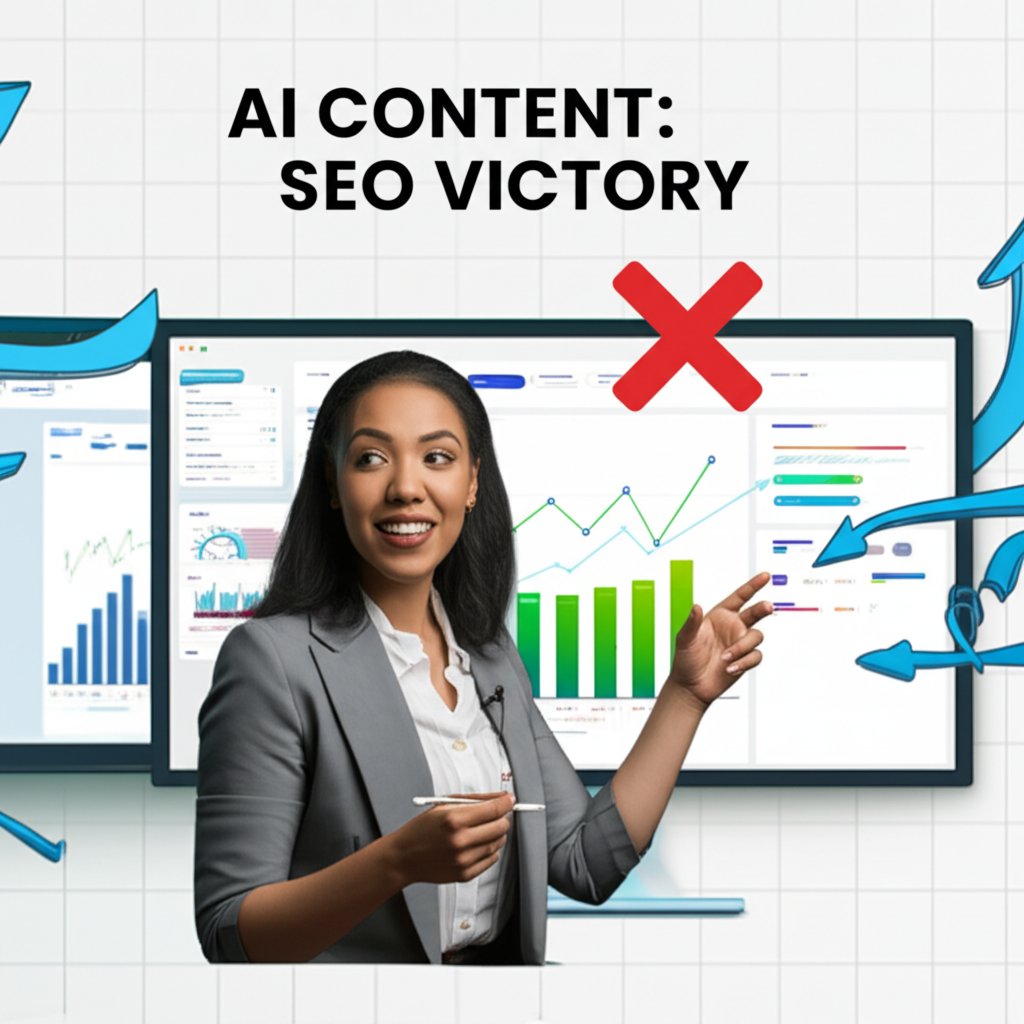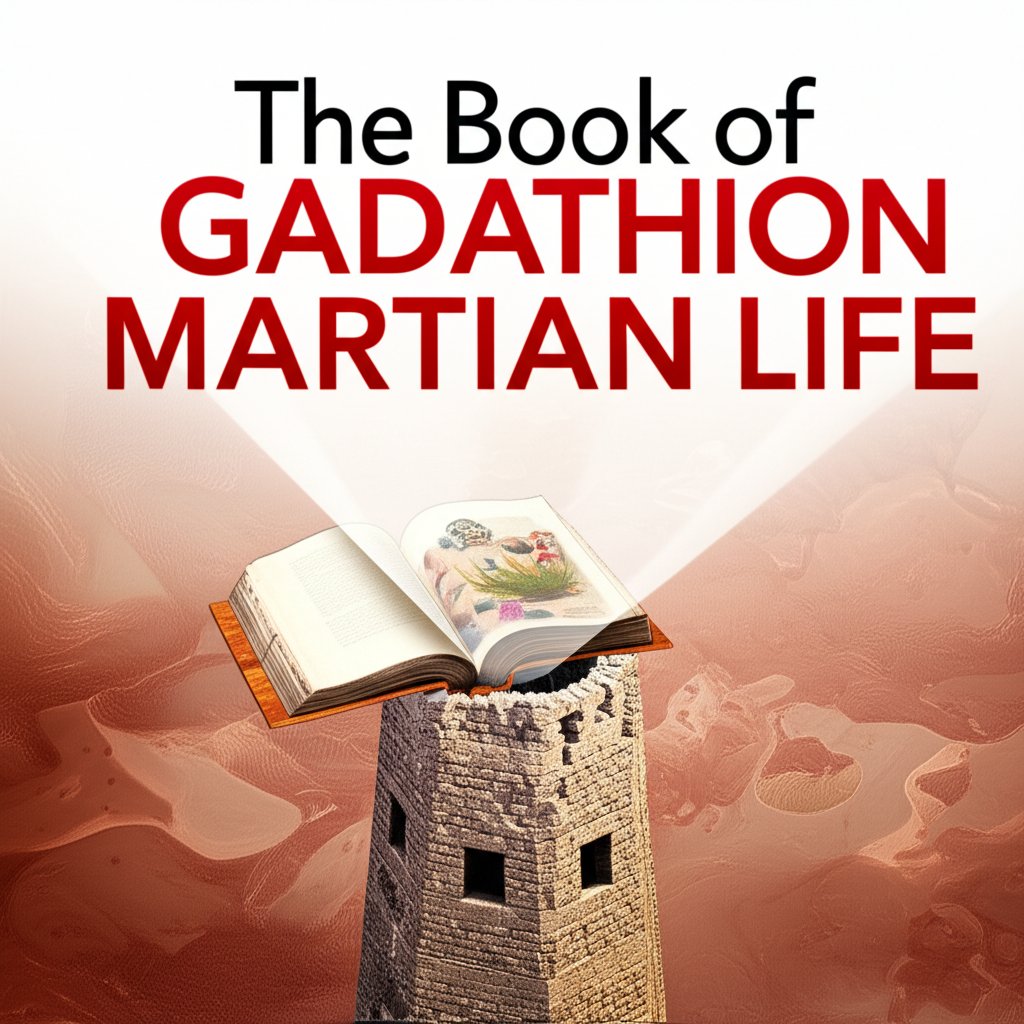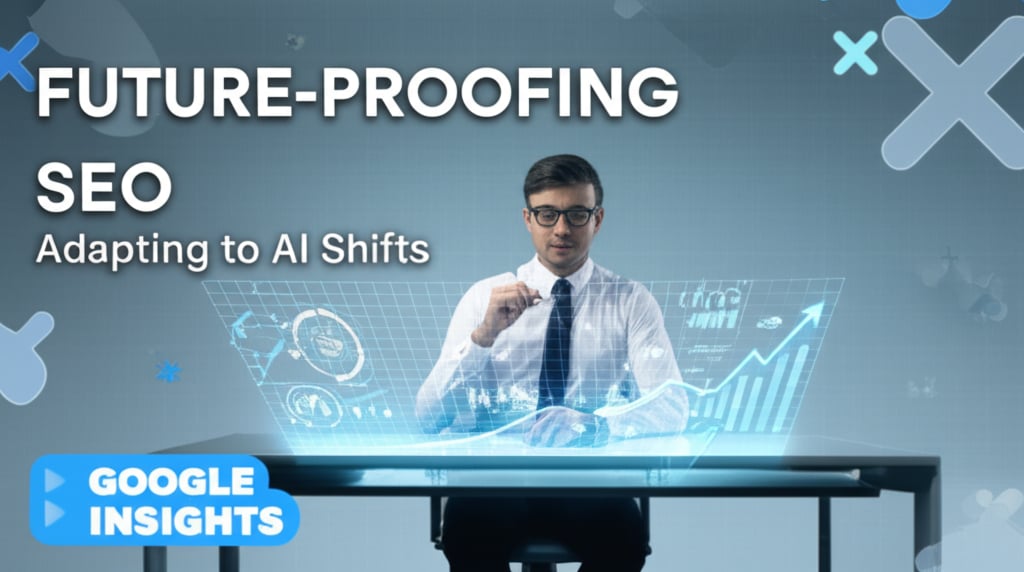AI-Powered Content Outlines: The Blueprint for SEO Success

Many businesses invest heavily in content creation, meticulously crafting compelling narratives and optimizing keywords, yet consistently struggle to secure top search rankings. The traditional focus often misdirects effort, implying that sheer volume or lyrical prose alone will drive organic performance. This approach overlooks the fundamental, often unseen, architecture that dictates a piece of content's SEO power: its structure. It is not just what you say, but the strategic, data-driven framework upon which your message is built that unlocks strong search engine performance.
In today's hyper-competitive digital landscape, relying on intuition or manual processes for content planning is a significant competitive disadvantage. The era of guesswork is over. This blog post will demonstrate how integrating advanced AI capabilities into the content outlining phase provides a clear strategic advantage. This intelligent approach, powered by artificial intelligence, establishes a robust framework for content that achieves significant visibility and delivers genuine value to readers.
We will explore why a meticulously structured content blueprint is not merely a convenience but a critical SEO component, acting as the bedrock for high-ranking articles. You will learn how AI is changing content planning by rapidly analyzing vast datasets, precisely identifying user intent, and architecting logically coherent structures that inherently align with Google's ranking factors. We will dissect the anatomy of a high-ranking AI outline, detailing the essential elements from optimized titles and hierarchical headings to targeted keywords and E-E-A-T signals. Furthermore, we will delineate the optimal human-AI workflow, showcasing how human expertise and creativity synergize with AI's analytical power to refine and elevate the initial blueprint. Finally, we will assert why AI-powered content outlines are rapidly becoming the new industry standard, transforming sporadic content efforts into a consistent engine for SEO success. Prepare to redefine your approach to content strategy and secure your position at the top of search results.
TL;DR
A well-architected content outline is the blueprint for high-ranking articles. It provides the logical structure search engines and readers require to understand your content's value and relevance.
AI-powered tools transform this process by rapidly analyzing SERPs, identifying search intent, and generating data-driven structures. An effective AI outline integrates SEO titles, hierarchical headings, target keywords, and signals of Expertise, Authoritativeness, and Trustworthiness (E-E-A-T). According to an HFB Technologies report, AI can produce a detailed outline in about one minute, a task that often takes a human researcher 30 minutes. The optimal workflow leverages AI for foundational structure, followed by human expertise for creative nuance and brand alignment.
- Foundation: A strong outline is critical for SEO success.
- AI's Role: AI automates data analysis to build comprehensive, intent-driven structures.
- Human Oversight: Expertise is required to refine AI output for accuracy, creativity, and brand voice.
- Synergy: The combination of AI's analytical power and human creativity produces superior content.
Ultimately, AI serves as a powerful assistant, providing the structural framework that enables human experts to create content that ranks and resonates.
The Unseen Architecture: Why Content Structure is an SEO Superpower
Before a single word is written, the battle for search engine ranking is often won or lost at the structural level. A content outline is not a preliminary formality; it is the strategic architecture that dictates how both search engine crawlers and human readers will interpret your page.
This deliberate structure functions as a roadmap. For search engines, a logical hierarchy of H1, H2, and H3 tags clarifies the main topics and subtopics, allowing algorithms to accurately index your content's relevance to specific queries. For readers, this same structure creates a scannable, intuitive experience. It improves engagement and enhances critical user experience signals like dwell time while reducing bounce rates—factors that directly influence rankings. As a Finch AI analysis on ranking factors confirms, search engines reward content that is comprehensive and built to satisfy the user.
Historically, crafting this architecture was a laborious process of manual SERP analysis, keyword mapping, and competitor deconstruction. It required significant time investment to build a framework that could compete effectively. Today, ignoring this foundational step is a strategic failure, leaving your content without the necessary support to achieve visibility or authority.
Note: Publishing content without a clear, hierarchical structure is like building a skyscraper without a blueprint. It may stand for a moment, but it lacks the integrity required for long-term performance and stability in the competitive SERP landscape.
A meticulously planned content structure is a non-negotiable asset for achieving top SEO rankings by satisfying the distinct needs of both algorithms and users.
The AI Revolution in Content Planning
The transition from manual to AI-powered outlining represents a fundamental shift from tactical execution to strategic command. AI platforms automate the exhaustive research that once consumed hours, transforming content planning into a highly efficient, data-driven discipline.
These intelligent engines process immense volumes of data in seconds. They analyze the top-ranking pages for a target query, dissecting their structure, heading distribution, keyword density, and semantic relationships. AI goes beyond simple keyword matching, employing natural language processing to identify the underlying user intent behind a search. It synthesizes insights from 'People Also Ask' sections, related searches, and forums to build a comprehensive picture of what an audience truly seeks. As a Salesforce AI Guide notes, this capability allows for the creation of content that is not just keyword-optimized but genuinely helpful and authoritative.
The result is a detailed, SEO-optimized outline generated in minutes, complete with proposed titles, meta descriptions, and a full hierarchy of headings populated with relevant subtopics and questions to answer. This speed and analytical depth provide a significant competitive advantage. It liberates content teams from the constraints of manual research, allowing them to allocate their valuable expertise toward refining strategy, infusing brand voice, and developing unique insights that AI alone cannot produce.
| Aspect | Manual Outlining | AI-Powered Outlining |
|---|---|---|
| Data Analysis | Manual review of 10-20 SERP results; slow and subjective. | Automated analysis of hundreds of data points in seconds. |
| Intent Mapping | Inferred through interpretation and guesswork. | Identified through semantic analysis and NLP models. |
| Speed | 30–90 minutes per outline. | 1–3 minutes per outline. |
| Scalability | Limited by individual researcher capacity. | Nearly infinite; enables large-scale content programs. |
| Focus | Labor-intensive research and data compilation. | Strategic oversight and creative enhancement. |
By automating the analytical heavy lifting, AI elevates the role of the content strategist from researcher to architect, empowered with the data to build content that performs.
Anatomy of a High-Ranking AI Outline

An effective content strategy is built on a superior structure, not guesswork. An AI-generated outline must serve as a comprehensive strategic brief, engineered for strong ranking potential from its inception.
This blueprint moves far beyond a simple list of headings. A high-performance AI outline integrates critical SEO elements directly into the content’s framework, ensuring every section is optimized for both search engine algorithms and user intent. According to the Salesforce AI Guide, intelligent tools are now essential for suggesting meta tags, structuring content into logical sections with proper headings, and incorporating other crucial ranking elements. This automated precision ensures a foundation built for visibility and authority.
The following template illustrates the key components of a comprehensive, AI-generated content brief. It provides an actionable plan for creating AI content that systematically targets keywords, satisfies user intent, and builds credibility.
# AI-Generated Content Brief: [Main Topic]
# -----------------
# METADATA & SETUP
# -----------------
# Primary Target Keyword: The main search query this content must rank for.
primary_keyword: "AI content outlines"
# SEO Title: Optimized for click-through rate (CTR) in SERPs. Includes primary keyword.
seo_title: "How to Use AI Content Outlines for Better SEO Rankings"
# Meta Description: Compelling summary (155-160 chars) to encourage clicks.
meta_description: "Learn to leverage AI content outlines to build a data-driven structure that satisfies user intent, aligns with E-E-A-T, and improves search rankings."
# Target Audience: Defines the reader persona to guide tone and depth.
target_audience: "Content strategists, SEO managers, and digital marketers."
# -----------------
# E-E-A-T SIGNALS
# -----------------
# Signals to embed within the content to build credibility.
eeat_signals:
- "Cite specific data or studies (e.g., 'A study by [Source] found...')."
- "Include a byline for an author with demonstrated expertise in SEO."
- "Link to authoritative external resources and internal case studies."
- "Add a 'Key Takeaways' or 'TL;DR' section for user convenience."
# -----------------
# KEYWORD & ENTITY TARGETS
# -----------------
# Secondary keywords and semantic entities to include naturally.
secondary_keywords:
- "content structure seo"
- "ai for content planning"
- "seo content brief"
- "human-ai workflow"
# LSI Keywords (Latent Semantic Indexing): Conceptually related terms.
lsi_keywords:
- "search intent"
- "topic clusters"
- "serp analysis"
- "content hierarchy"
# -----------------
# CONTENT HIERARCHY (H1-H4)
# -----------------
# The structural blueprint of the article.
# H1: The main title of the article.
H1: "AI-Powered Content Outlines: The Blueprint for SEO Success"
# H2: Main sections of the article.
H2: "Why Content Structure is a Critical SEO Component"
# H3: Sub-points supporting the H2.
H3: "How Structure Impacts Search Engine Crawlers"
H3: "The Role of Structure in User Experience and Engagement"
H2: "The AI Advantage in Modern Content Planning"
H3: "From Manual Research to Automated SERP Analysis"
H3: "Using AI to Accurately Identify User Intent"
# H4: Granular detail supporting an H3.
H4: "Analyzing 'People Also Ask' and Related Searches"
H2: "Anatomy of a High-Ranking AI Outline"
H3: "Essential Elements: Title, Meta, and Headings"
H3: "Integrating Keywords and E-E-A-T Signals"
H2: "The Optimal Human-AI Workflow for Content Creation"
H3: "Step 1: AI-Generated Blueprint"
H3: "Step 2: Human Refinement and Expertise Injection"
H3: "Step 3: Writing, Fact-Checking, and Polishing"
# -----------------
# INTERNAL & EXTERNAL LINKING
# -----------------
# Strategic links to build topical authority and provide value.
internal_links:
- "Link 'topic clusters' to our pillar page on Content Strategy."
- "Link 'E-E-A-T' to our detailed guide on Google's quality guidelines."
external_links:
- "Cite a reputable source like Google's Search Central Blog for official info."
- "Link to a trusted industry study on AI adoption in marketing."This blueprint transforms a simple topic into an actionable plan for creating content that systematically targets keywords, satisfies user intent, and builds credibility.
From Blueprint to Reality: The Human-AI Workflow
An AI-generated outline is the architectural plan; a human expert is the master builder. The most effective content emerges from a hybrid workflow that leverages machine efficiency and human intellect.
This process uses AI to construct a powerful, SEO-optimized skeleton, which is then layered with the unique expertise, voice, and strategic insights that only a human can provide. This synergy is critical for developing content that not only ranks but also resonates and builds true authority. As noted by HFB Technologies, combining AI-generated drafts with meticulous human editing consistently produces superior results, blending computational speed with indispensable creative oversight. This structured collaboration ensures the final asset is both technically sound and strategically compelling.
The optimal workflow integrates AI as a strategic partner, not a replacement, allowing your team to focus on high-value contributions that drive market differentiation.
- Generate & Review: Deploy an AI tool, such as OutblogAI, to generate the initial content outline based on your target keyword and strategic goals. Critically review this blueprint for logical flow, topical completeness, and competitive alignment. Identify any gaps or sections that deviate from the core objective.
- Refine & Inject Expertise: This is the most critical human intervention. Augment the outline with your proprietary data, unique industry insights, brand voice, and personal anecdotes. This step is where you build genuine E-E-A-T (Experience, Expertise, Authoritativeness, and Trustworthiness), creating a defensible competitive advantage.
- Write & Elaborate: With the refined outline as your guide, write the full draft. Use the structured prompts for keywords, user intent, and internal links to ensure every section fulfills its strategic purpose. The outline provides the guardrails, allowing you to focus on crafting powerful, persuasive prose.
- Fact-Check & Polish: Never implicitly trust AI-generated statistics or factual claims without independent verification. Meticulously fact-check every data point. Finally, polish the entire piece for clarity, tone, and grammatical precision, ensuring it meets your brand's highest standards.
This disciplined process maximizes efficiency without sacrificing the quality and authenticity that are non-negotiable for market leadership. The ultimate goal is to fuse the scalable structure of AI with the irreplaceable judgment and authority of human expertise.
The Future is Structured: AI Outlines as the New Standard
As search engines evolve into sophisticated answer engines, content structure has become a primary pillar of performance. The demand for highly organized, user-centric content is no longer a trend but a fundamental requirement for visibility.
In this competitive landscape, leveraging AI outlining is a strategic necessity. They provide the architectural integrity needed to produce high-quality content at scale, transforming the chaotic, time-consuming process of manual briefing into an efficient, data-driven workflow. This shift allows content strategists to elevate their focus from tactical execution to high-level planning and creative differentiation. According to the Salesforce AI Guide, the future of SEO will continue to be shaped by AI innovations that demand greater precision and strategic foresight from marketing teams.
Embracing this technology is not about replacing human creativity but augmenting it. It provides a systematic framework to ensure every article is comprehensive, coherent, and engineered to provide the best possible answer to a user's query.
Strategic Insight: The primary competitive advantage in content is shifting from what you write to how you structure and deliver that information. AI-driven outlining provides the operational discipline to win on structure, freeing human experts to win on substance.
This evolution marks a permanent shift in content operations, where intelligent automation handles the foundational work of structuring for success. Integrating AI-powered outlines into your content workflow is essential for building a scalable, future-proof SEO strategy that consistently delivers results.
The journey to improved search performance begins not with the final article, but with its strategic foundation: a meticulously crafted content outline. AI has decisively transformed this initial phase, elevating it from a time-consuming task to a high-performance strategic advantage.
Here are the critical takeaways from leveraging AI for content outlines:
- A robust content outline is the indispensable blueprint for creating high-ranking, SEO-optimized content that truly resonates with readers.
- AI tools provide an unparalleled capability to generate data-driven content structures, precisely analyzing search intent, identifying keyword opportunities, and embedding E-E-A-T principles.
- The most powerful content workflow integrates AI for its rapid, analytical structuring power, complemented by human expertise to infuse creativity, brand voice, and nuanced value.
AI serves not as a replacement, but as an intelligent engine, amplifying human strategic foresight and execution. It provides the competitive edge necessary to navigate and conquer the complex digital landscape. To transform your content strategy, embrace AI-powered outlining as a fundamental pillar of your operations. By leveraging intelligent systems to architect your content, you transition from reactive content creation to a proactive strategy designed for maximum impact and sustained search performance.




